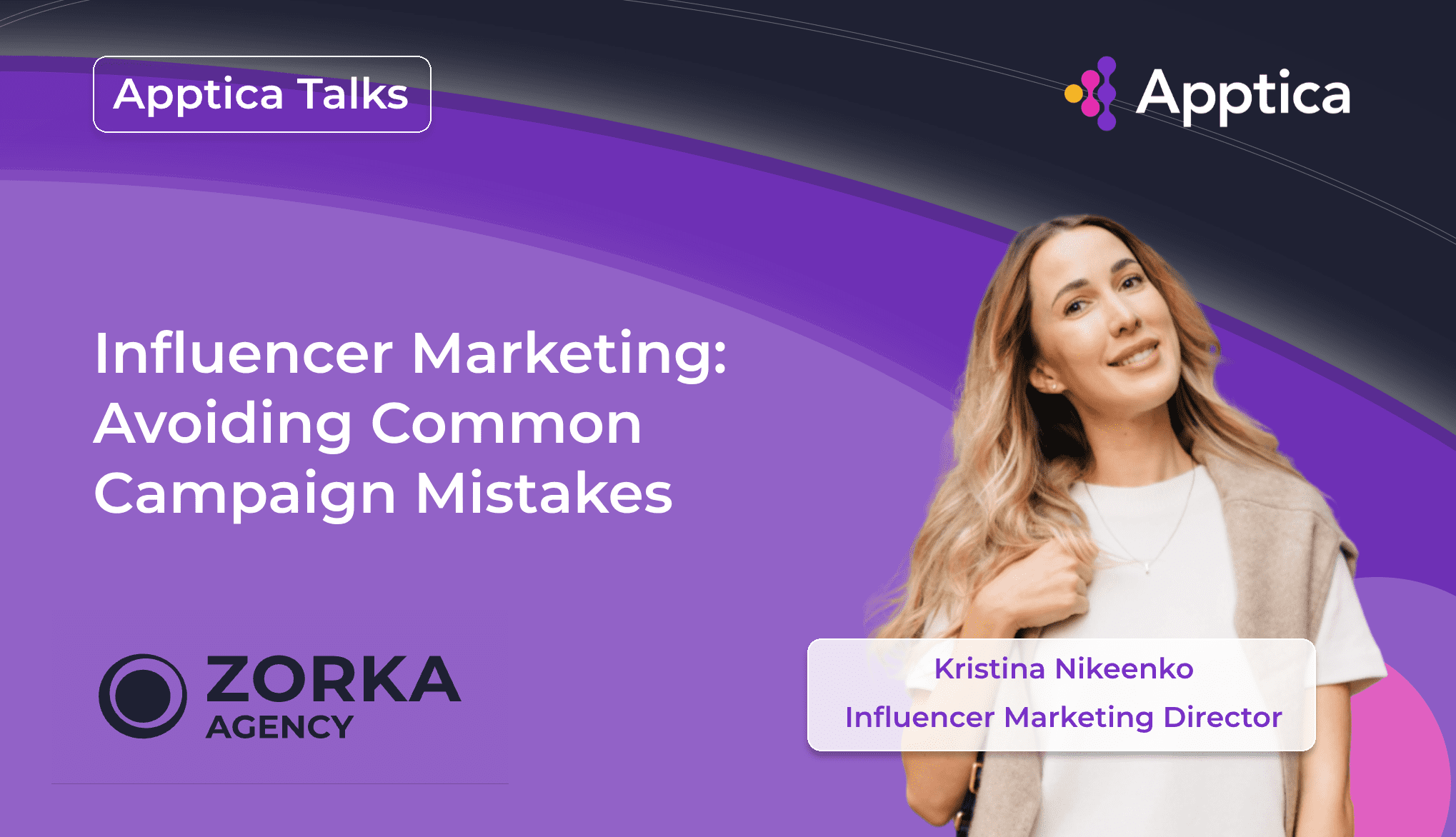Apptica Talks. Episode #4. Influencer Marketing: Avoiding Common Campaign Mistakes with Kristina Nikeenko from Zorka.Agency
In a new episode Kristina Nikeenko from Zorka.Agency shares experience in influencer marketing along with common pitfalls that might scale down your advertising campaigns.

In this episode Apptica Talks about Influencer Marketing and common campaign mistakes with Kristina Nikeenko - Head of Influencer Marketing at Zorka.Agency.
Zorka.Agency - is an international influencer and performance marketing agency focused on creating ROI-forecasted strategies with a risk assessment that help businesses scale up.
What we have talked about:
Product Issues:
- hybrid links and their advantages
- product incompleteness (low rating, bugs, lack of localization)
Marketing Issues:
- the importance of promo codes and bonuses
- ill-conceived creative brief and the role of an influencer in the creation process
- statistics: how to avoid fraudsters and fake numbers
- legal relations with an influencer
- what channel and influencer type to choose for your specific needs
- how to calculate the budget for your campaign
Key takeaways:
- Launching a campaign when the product is not ready can lead to controversial results: lack of localization, low rating, bugs. Before starting a campaign ensure that your product is polished. In case of major technical issues, be transparent and indicate the problems in the creative to win audience’s trust
- It’s better to use hybrid links, it will decrease the chances of attributing the users to organic traffic. Make sure that a tracking system is in place and measures the results accurately (run a test with 10 new users and a few old ones that used your app in the past)
- The number of users who watch the content on TV or tablets is growing rapidly, so it’s better to put QR codes in the creatives
- Promo codes can help track the users more effectively, as >30% of users are attributed to organic traffic by avoiding clicking the links
- Competitor analysis can help identify look-alike influencers or even take the ones who promoted a competitor’s product. It’s cheaper than running multiple tests
- In order to avoid fraudsters a marketing team should request the statistics and thoroughly check the numbers. Screencast and third-party tools may assist with that. Some recommendations: IQ Data, HypeTrain, YouScan, Thoughtleaders
- It’s better to combine micro-influencers with the bigger ones to diversify the risks. Focus on niche-influencers could narrow the reach and reduce the chances of getting on plateau
- In performance-oriented campaigns strict briefs can ensure better results. An influencer has a say, but every step should be controlled by a marketing team
- It’s better to sign a legal agreement and include there as many clauses as possible to be on the safe side: think of copyright conditions to be able to use it afterwards, obligate an influencer to provide statistics, negotiate additional actions in case of poor results
- For brand awareness campaigns TikTok is the best solution as traffic is cheaper. If a campaign is performance-oriented, multi-platform approach is more relevant (Discord, Twitch, Instagram, YouTube, etc)
- Budget estimation derives from your target. You can calculate how many views you need to get a set number of installs taking into consideration your average conversion rate. Moreover, the price range varies in every geo. E.g. the average CPM on YouTube in english-speaking countries is about 20-30 USD, whereas in LATAM it is 7 USD
You can learn more more insights in Zorka's blog and a recent report.
To get in touch with Kristina:
k.nikeenko@zorka.agency
Linkedin
🎧 Put on your headphones and enjoy:
Spotify
Apple Podcast
Google Podcast
YouTube




